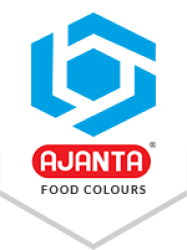Synthetic Food Colour - Violet
Violet is a colour that embodies both elegance and vibrancy and it is prominent in the world of synthetic food colours. This colour is known for its deep and rich hue and comes in various forms including liquids, powders, and gels, which makes them versatile for use in different applications. The captivating look of violet colour adds a touch of sophistication and appeal to a wide range of products, from confections, cosmetics, and beverages, to pharmaceuticals, and more.
History of the Violet Colour
The journey of synthetic violet colour traces back to the mid-19th century. At that time this colour was achieved by the mixture of two synthetic dyes, Red 3 (Erythrosine) - a red dye with a bright pink hue, and Blue 1 (Brilliant Blue FCF) - a blue dye with a vibrant blue tone. In the mid-19th century, this dye was only used in the textile industry, but later it was used by food manufacturers in their products when they recognized its potential. In the 20th century, violet colour had become a favored choice of manufacturers to colour various food and beverage applications such as candies, ice creams, baked goods, mocktails, etc. This synthetic dye is a great alternative to natural dye and provides a more visually appealing look to the products.
Applications of Violet Colour
In today’s world, synthetic violet colourants are used by manufacturers in a wide range of food and beverage applications such as candies, gummies, jellies, baked goods, mocktails, cakes, cookies, ice creams, and more. This synthetic dye is also used in various cosmetics, pharmaceuticals, personal care products, and even animal food. Voilet synthetic colour provides a vibrant and appealing look to the products, attracting consumers and boosting product sales. This colour also provides stability to the product means they do not fade or change its colours during storage of the product which makes it an ideal choice for manufacturers to use this colourant in their products.
Drawbacks of Using Low-Quality Violet Colour
Low-quality dyes including purple have many drawbacks, especially at the commercial level. These drawbacks include poor colour stability, uneven colour, and not providing a final attractive look to the products. These things are very important for any product which makes the product attractive to consumers, builds brand recognition, and increases product sales. These substandard colours often contain pollutants that can also pose health risks, leading to potential regulatory non-compliance and consumer dissatisfaction.
Regulatory Compliance on Violet Colour
Synthetic food colours including violet are globally used by manufacturers in their products. These colours are overseen by the governmental bodies of every country to ensure their safety for human consumption. Bodies such as the US Food and Drug Administration (FDA), the European Food Safety Authority (EFSA), the Food Safety and Standards Authority of India (FSSAI), the National Health Commission (NHC), and the Ministry of Health, Labour and Welfare (MHLW), etc., are set rigorous standards for the use of synthetic colours in products. Manufacturers have to follow all the regulatory standards set by the government bodies to sell or export their products without any problem. Ajanta Food Colours is a leading synthetic colours manufacturing company with over 75+ years of legacy. Ajanta meets all the standards set by these governmental bodies and provides colourants that are not only vibrant and effective but also safe for human consumption.
Ajanta Food Colours uses the latest technology and equipment including ICO OES to detect heavy metals in raw materials and finished goods, high-performance liquid chromatography for organic impurities, UV spectrometry to analyze pigment content and strength, absorbance curves of colours, thin-layer chromatography, vacuum ovens for LOD tests, humidity detection in products, and colour matching machines along with other instruments for complete testing of the raw materials and colours. These latest and advanced equipments help Ajanta to provide the best quality colours to their clients and fulfill Ajanta’s high-quality colourant demand globally.
Ajanta Food Colours received various awards and certificates from the governmental bodies of the countries where Ajanta exports its high-quality colours. Some of the awards and certificates of Ajanta Food Colours include The Arch of Europe Award, the Bureau of Indian Standards (BIS) Award, certifications from The Food Safety and Standards Authority of India (FSSAI), the US Food and Drug Administration (US FDA), as well as Halal, Alcumus ISOQAR, Star-K Kosher, Food Safety System 22000 (FSSC 22000), and ISOQAR certifications, among others.
Conclusion
By using Ajanta’s high-quality synthetic food colours in their products including violet, manufacturers have various advantages. Ajanta Food Colours offers a supra range of colourants, including water-soluble food colours, water-soluble food colour blends, aluminum lakes, inorganic pigments, water-soluble dyes, oil-soluble dyes, and organic pigments. Ajanta’s high-quality synthetic colours provide a vibrant and appealing look to the products which helps in attracting consumers and boost product sales. With the advantage of lots of different colour shades offered by Ajanta Food Colours, manufacturers make their products different and unique from their competitors, which helps in product brand recognition and consumer trust.
To know more about Ajanta Food Colours, its high-quality colorants, or for any other questions, please contact us.




